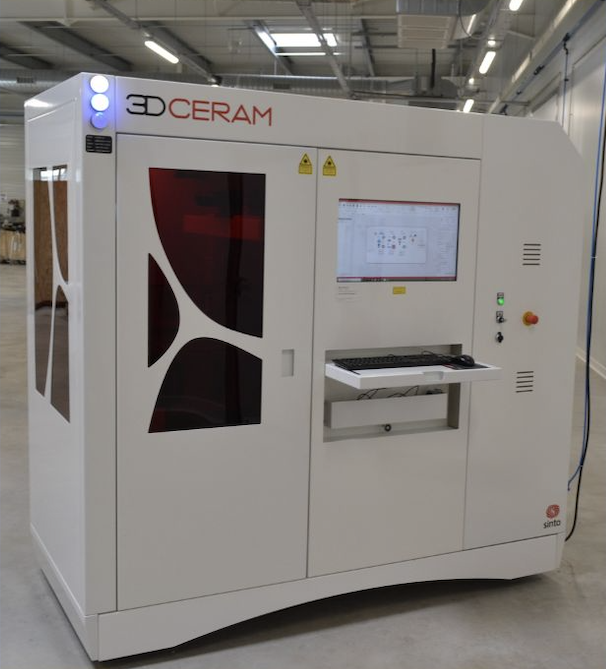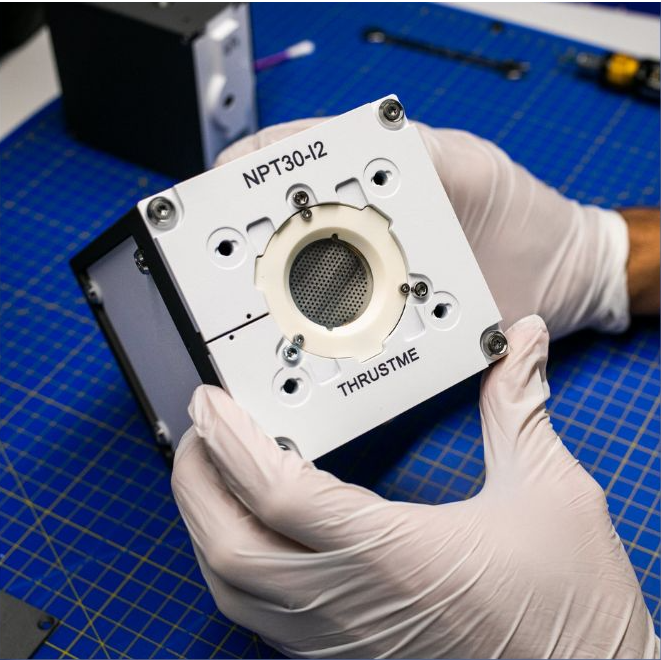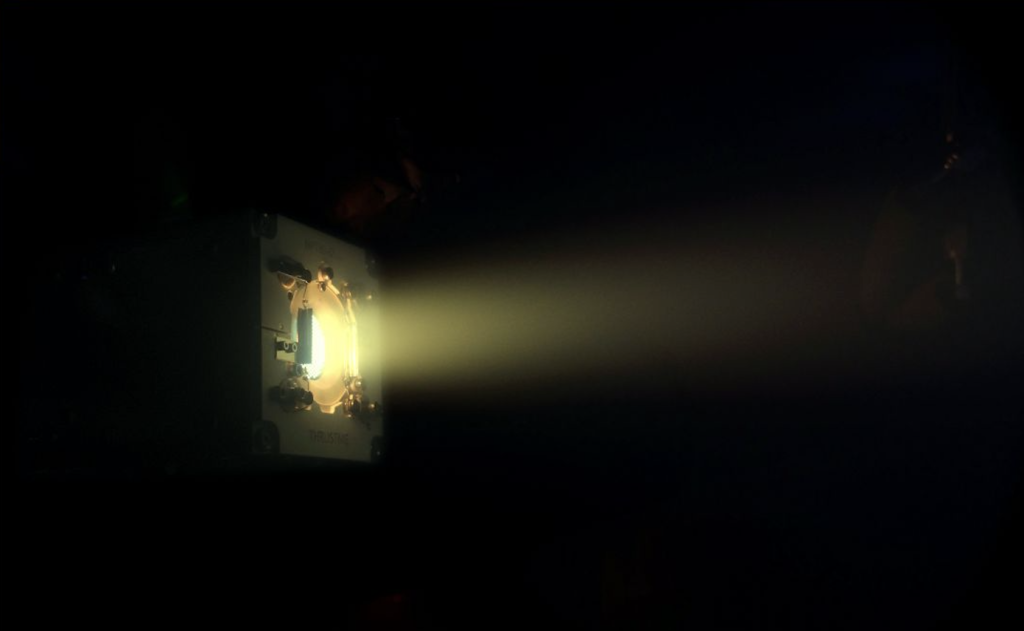French 3D printing OEM and service bureau 3DCeram has been selected to be an official supplier of French space propulsion manufacturer ThrustMe.
ThrustMe will now look to leverage 3DCeram’s expertise in ceramic additive manufacturing, and exploit the potential of ceramic materials in aerospace applications. ThrustMe’s 3D printed ceramic approach aims to overcome the limitations of traditional manufacturing materials and techniques. The company claims that ceramics offer a more compact, efficient, and reliable solution than traditional manufacturing.
“On 3DCeram’s side, we take pride in our collaboration with ThrustMe as 3D printed ceramic components have been successfully sent into space, marking a significant milestone in the application of additive manufacturing,” commented 3DCeram sales representative Arnaud Roux.
“It signifies a new era where complex and customized parts can be efficiently produced, surpassing traditional manufacturing limitations,” continued Roux. “This significant step forward not only validates the viability of 3D printing as a production tool but also inspires us to reach further and unlock the vast possibilities that lie ahead.”

ThrustMe adopts additive manufacturing
Founded in 2017, ThrustMe has already established itself as one of the key actors within the New Space sector, specializing in the miniaturization of electric propulsion systems.
The “New Space” era refers to the recent developments and advancements made in the space industry, driven by private companies. According to Elena Zorzolli Rossi, ThrustMe product manager, this increased commercialization of space is being driven by rapid technological advancements. Zorzolli Rossi claims that companies need to take more risks, iterate quickly, and experiment with new ideas to further developments within the space industry. “The whole production chain needs to be prepared to meet New Space costs or lead times,” added Zorzolli Rossi
In 2020, ThrustMe made the world’s first successful demonstration of an iodine-fueled electric propulsion system in space. ThrustMe now primarily delivers to major satellite constellations, and has opened a new production facility capable of producing 365 products per year.
According to Zorzolli Rossi, the company chose to adopt 3D printing to manufacture specific parts in their thrusters following an extensive research process. A number of factors were identified which elevate additive manufacturing above traditional manufacturing methods.
“Primarily, the space industry often requires the production of complex shapes that cannot be easily obtained through traditional machining methods,” explained Zorzolli Rossi. “At ThrustMe, we don’t talk about only the complexity but also the miniaturization, a critical requirement in the development of our products. In such cases, 3D printing offers a transformative solution by enabling the creation of specific designs with the precision we need.”
Additionally, the versatility of 3D printing was found to be a key advantage, allowing the company to quickly iterate and refine designs without incurring significant costs or lead times.
“Traditional manufacturing processes often involve the creation of molds or tooling, which can be time-consuming and expensive,” stated Zorzolli Rossi. “With 3D printing, we can rapidly produce prototypes and iterate on designs with minimal setup time, facilitating a more agile development process and accelerating our time to market.”

Why use ceramics?
According to Zorzolli Rossi, “several factors were thoroughly evaluated before choosing ceramic.”
The decision to use ceramic was driven by “multiple crucial factors related to the harsh space environment like vacuum and extreme temperature ranges, and specific features of the iodine plasma propulsion system such as energetic fluxes of elementary particles, secondary emission, intense sputtering and reactive ion etching.”
Ultimately, the key consideration which influenced this decision related to the operating conditions the components would encounter. “Some of our components are exposed to high temperatures in a chemically active plasma environment, requiring a material with exceptional heat and chemical resistance,” explained Zorzolli Ross. “Ceramics emerged as the most suitable option in this regard, with its remarkable thermal and chemical stability.”
The wide ranging thermal conductivity of ceramics also made it an attractive option. Indeed, efficient heat transfer and isolation of heat is said to be crucial for ThrustMe’s components. This helps to guide thermal fluxes effectively, and prevents overheating or overcooling. Ceramics exhibit a substantial range of conductivity properties, enabling selective heat transfer and ensuring optimal performance in these products.
The electric properties of ceramics also played a significant role in ThrustMe’s material selection process. “Our components require a material that can effectively isolate and protect against high-voltage electrical breakdowns,” stated Zorzolli Ross. “Ceramics possess exceptional electrical isolation properties, making it an ideal choice to meet our stringent requirements in this aspect.”

Ceramic 3D printing for space
Last year, the French Space Agency announced that it was investigating the use of ceramic 3D printing in space subsystem optimization. In particular, the researchers evaluated how 3D printing oxide ceramic materials could improve the design of crucial subsystems for space propulsion.
The study highlighted that optimized yttrium aluminum garnet (YAG) xerogel offers desirable strength and creep-resistant properties when 3D printed into complex shapes. Thus, 3D printed YAG ceramics could be used to form the basis of metal alloys used in future turbine blades for deep space exploration.
Additionally, the International Space Station (ISS) is home to a Made In Space’s ceramic additive manufacturing facility, the Turbine Ceramic Manufacturing Module (CMM). This module contains an SLA 3D printer, used to demonstrate the feasibility of manufacturing single-piece ceramic turbine components in microgravity environments. This is said to have been the first SLA 3D printer to operate on orbit.
Subscribe to the 3D Printing Industry newsletter to ensure you keep up with the latest 3D printing news. You can also follow us on Twitter, like our Facebook page, and subscribe to the 3D Printing Industry Youtube channel to access more exclusive content.
Are you interested in working in the additive manufacturing industry? Visit 3D Printing Jobs to view a selection of available roles and kickstart your career.
Featured image shows a ThrustMe aerospace component. Photo via ThrustMe.


